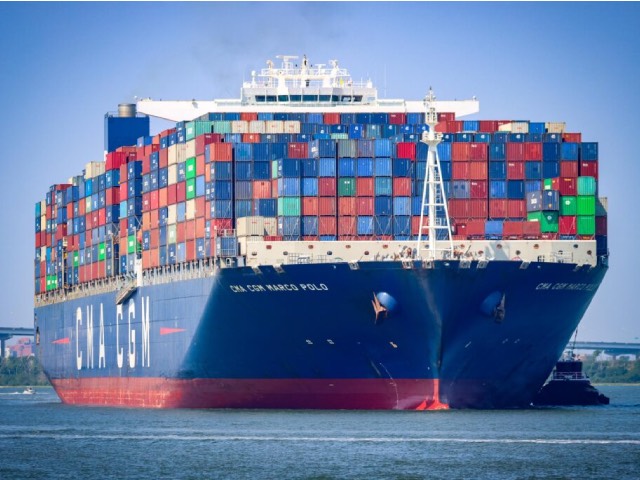
The Dutch-Flemish port authority North Sea Port has been set a clear assignment by its eight public shareholders: to draw up a strategic plan with a 2025 horizon based on the shareholders’ strategy. Central to this are balanced value creation within the framework of economic development and employment, sustainability and climate, and a solid financial foundation.
The port authority is now submitting a plan to the shareholders to put this assignment into practice. The strategy is aimed at developing business premises and infrastructure, nautical services and the role of director in the port area. Relationships with companies, public authorities and the environment are key. And there is a focus on the chemicals, steel, building materials, energy, automotive and trucking, food and feed, and value-added logistics sectors. The port authority aims to deliver the plan through eight strategic programmes.
Daan Schalck, CEO North Sea Port: “As a top ten European port, North Sea Port faces considerable challenges and opportunities in terms of energy transition, the circular economy, climate, the logistics chain, port infrastructure and digitisation. The port authority is addressing those challenges and explicitly wants to be the linking factor, the connector. This strategic plan makes clear choices to achieve that, giving shareholders and local residents confidence in the direction taken by North Sea Port and providing assurance for the large investments made by companies.”
The shareholders will consider the strategic plan until mid-October. The port authority is asking for a clear mandate from the province of Zeeland, the municipalities of Vlissingen, Borsele and Terneuzen as the Dutch shareholders and the city of Ghent, the province of East Flanders and the municipalities of Evergem and Zelzate as the Flemish shareholders. Over the coming months, the port authority will discuss this with the shareholders, after which the plan will be finalised.
Shareholders committed to employment, sustainability and a solid financial foundation
The port authority has been instructed by its shareholders to pursue three tasks such that they remain in balance with one another: economic development and employment, sustainability and climate and a solid financial foundation.
The first task is to create employment within a larger, high-value and future-proof network of companies. It is the companies that create the jobs and invest in sustainability. So it is crucial to attract the right companies to the cross-border region, to keep them there and to enable them to grow. That means looking forwards, innovating and diversifying.
The second task is sustainability and climate: less CO2, more nature, more circularity and efficient use of space. The companies in North Sea Port are sensitive to the pressure to become more sustainable. The port authority wants to differentiate itself by helping them achieve their sustainability goals while also setting a good example.
The third task is to be financially healthy. The shareholders do not participate in North Sea Port to make money. North Sea Port therefore does not have a dividend target, but instead seeks a financial result that will allow it remain financially healthy.
The strategic plan: three core tasks, customer focus, seven sectors and eight programmes
In order to fulfil the brief it has been handed by its shareholders, the port authority will perform three core tasks, put the customer first, focus on seven priority sectors and roll out eight programmes to achieve the plan.
Daan Schalck, CEO North Sea Port: “With targeted choices, support and ambitious goals, we want to play a connecting role in order to achieve concrete results with social added value by 2025. We are providing 150 hectares for the circular economy, further increasing the reuse of CO2, continuing to grow as Western Europe’s leading hydrogen cluster, working to enhance electrification, increasing the sustainability of the logistics chain, building infrastructure in consultation with businesses and public authorities, and boosting digitisation.”
- Providing space and infrastructure, nautical services and connection
Over the next five years, the port authority will continue to perform its three core tasks. The provision of available business premises and port infrastructure is the first. The port authority also provides nautical services such as shipping assistance. A third – special – task is that of ‘conductor’, bringing everything together in the port area. Expanding and further fleshing out this role is the connecting thread in the strategic plan and one of the eight programmes for delivering it.
- Customer orientation and focus on seven sectors
The Port Authority wants to set itself apart in terms of customer partnership. This is a different approach to that of most seaports, which aim to deliver the lowest possible cost for the customer or to be the leader in a particular market segment. Through this customer partnership, the port authority wants to play a connecting role, establishing a relationship of trust and looking towards the future.
In doing so, it aims to meet the specific needs of the companies and offer them customised services. This is why the port authority is seeking growth in seven priority sectors: chemicals, steel, building materials, energy, automotive and trucking, food and feed, and value-added logistics.
The way in which the port authority aims to interact with local residents and those living in the wider region also fits within the philosophy of customer partnership: maintaining contact, with an awareness of each other’s interests and seeking consensus. Customer partnership also means building powerful alliances in which each partner does what it does best.
- Eight programmes to deliver the strategic plan
With the following eight strategic programmes, North Sea Port continues to build its position as a European port.
- Investing in circular value chains
- Investing in energy projects
- Investing in climate
- Strong logistics chains
- Future-proof infrastructure
- Data community
- Together with society
- Connecting cooperating parties








































